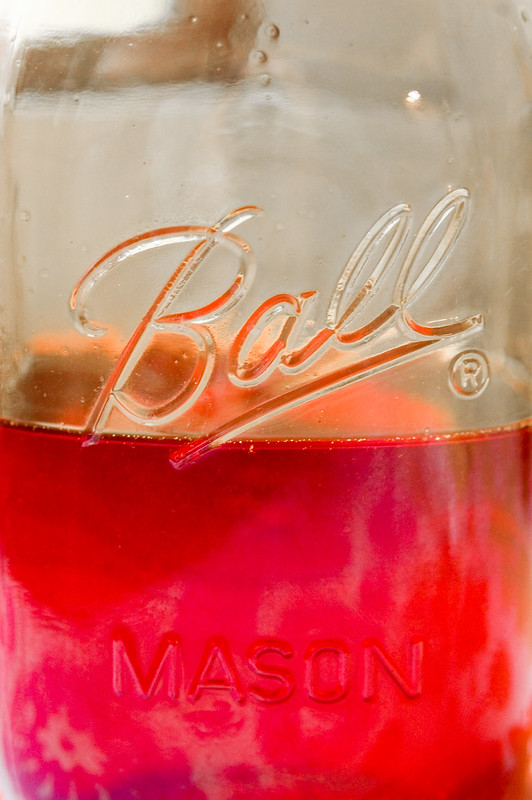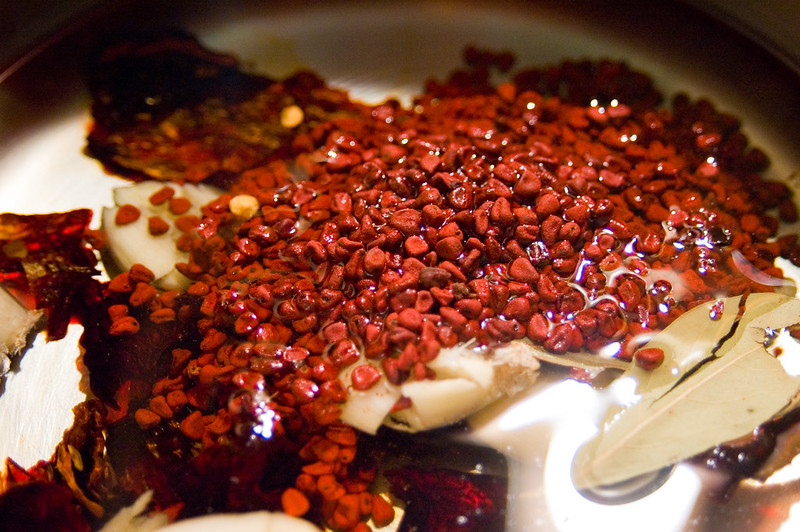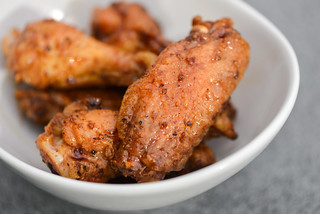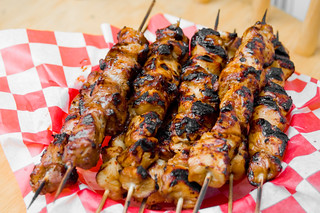Chicken Inasal
I'm heading down to Houston for a quick visit to celebrate Kristin's Mom's birthday. Houston always means non-stop delicious Filipino food, as her Mom tends to feed us constantly. Lost in my thoughts of the tocino, empanadas, and adobo that are sure to grace my plate in the next few days, I remembered a remnant of the Filimeato Feast that never seemed to make it to the blog. Call it laziness or lack of time (I'm sticking with the later), but my intended post about Chicken Inasal was never written. This by no means is a reflection on the status of the dish, and it's about time I give another piece of Filipino cuisine the time in the spotlight it deserves.
Besides being a back-up in case the Filipino BBQ went horribly wrong, Chicken Inasal was mostly an excuse to make achuete oil. I only learned of achuete while in the Philippines, when I inquired about the bright orange color of the most delicious adobo I ever had while eating it on the beach in Puerto Galera during a day of island hopping. I was sure the answer would lead me to the secret behind great adobo, but when I was told the color was merely food coloring by annatto seeds, I was still intrigued none-the-less. I bought a jar of annatto right when I got back, put it on top of my fridge and there it has sat, unused, even though I had an urge to make achuete oil every time I saw Daisy Martinez do it on Daisy Cooks, a fine program indeed.

I made the achuete oil based on the recipe from Memories of Philippine Kitchens, which adds some bay leaves, garlic, and chiles into the mix, which I figured could only make it that much better. So all the ingredients went into a sauce pan and I heated the oil just until the annatto seeds started to bubble, then turned off the heat and let it cool for an hour or two. Then straining the oil into a mason jar, I beheld the beautiful red and fragrant oil I created, that will color many dishes to come.
Chicken Inasal might have been an unusual choice for a back-up, because the couple times I've had it, it's always been dry and rather tasteless. Armed with with my chicken expertise, I figured I could change that though, and create a chicken that was moist, tasted of the great calmansi, and had the fragrance of the achuete oil. First step was to let the chicken quarters marinate 24 hours before grilling, getting as much great Filipino flavor into the meat as possible. Second step was making sure the chicken did not dry out on the grill, which can happen easily. The best approach to avoid a dry bird is to build a two zone fire, with all the coals on one side of charcoal grate, creating "hot" and "cool" sides of the grill. I cooked the chicken on the cool side of the grill, covered, until they were almost completely cooked, about 160 degrees in the thigh. Then I grilled them quickly over the hot coals to crisp the skin and raise them to their final temperature of 165 degrees.
The end result was a moist and delicious grilled chicken that, unfortunately, did not retain the flavors of the marinade. I was really hoping for something that tasted of the sublime citrus flavor of the calamansi, but I guess I needed to up the calamansi for that, or maybe mine was just too weak, not being freshly squeezed (where can I find fresh calamansi in NYC anyway?). The chicken was still a hit, but played seconds to my Filipino BBQ that ended up stealing the show. I guess I ended up forgetting about this chicken in my excitement of the sweet bbq success, but it's not the chicken's fault, so please don't lay blame on the bird and try some Chicken Inasal for yourself.
You Might Also Like
Comments
-
Tyson Amos I love chicken inasal specially in Bacolod Chicken Inasal.
-
Mark Quiniones ei dude! Your not alone. I love BCI too.
-
Davin Tolosa Where can I find that Bacolod Chicken Inasal here in manila? Is that only in Bacolod?
-
Arnel Hey Davin do u have brother name Edwin Tolosa?






